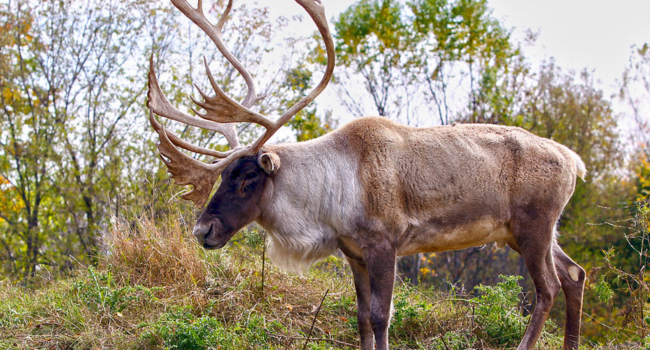False balance favours industry over wildlife
By David Suzuki with contributions from Boreal Project Manager Rachel Plotkin
Nature is dynamic, constantly in flux.
Yet within nature’s dynamism, an ecological equilibrium, or balance, is often achieved — something I wrote about in my book The Sacred Balance.
States of equilibrium can be observed in nature at vastly different temporal and physical scales, from a tiny, near-perfectly symmetrical snowflake before it melts to predator-prey dynamics.
As I’ve emphasized my whole career, humans are part of nature. We have the potential — the creativity and the problem-solving abilities — to live sustainably within the planet’s finite limits, but the impact of our unrelenting collective drive for profit is one factor that has thrown most natural systems out of equilibrium. (Climate change is just one disturbing consequence.) Many Indigenous communities have successfully incorporated elements of natural law into their governance systems. Mainstream society, however, has been far less successful at doing so and often uses concepts from nature to soften the language of policy directions that support perpetual industrial expansion.
For example, the dynamic qualities of fire have been used to justify industrial clearcut logging in Ontario, under the Dynamic Caribou Habitat Schedule policy. It’s based on the premise that “forest ecosystems are dynamic and can be thought of as following an adaptive cycle that has four phases: growth, maturity, collapse and reorganization.” This framing enables the province to approve logging in known intact caribou habitat by banking on caribou returning to forests after they’ve been clearcut, although population re-establishment is yet unproven.
We have the potential — the creativity and the problem-solving abilities — to live sustainably within the planet’s finite limits, but the impact of our unrelenting collective drive for profit is one factor that has thrown most natural systems out of equilibrium.
Forests are dynamic, as are forest fires, which usually hop around, leaving patches of trees in their wake. Clearcuts, on the other hand, tend to be less dynamic. Although management practices often require some level of tree retention, logging typically leaves behind far less diverse landscapes than fire events. To temper the impacts of industrial logging, forest management needs to include some countermeasures of stability to protect and maintain healthy functioning ecosystems as security for forest-dwelling species that need them now to survive.
Similarly, politicians who promise to “balance” conservation and economic interests don’t take context sufficiently into account — such as the fact that for most of nature, the scales have already tipped grossly in favour of generating profit.
When we talk about balancing values, we need to recognize that our starting place is already unbalanced. This is demonstrated, for example, by the facts that one in five species in Canada is at some level of risk (habitat loss and fragmentation remains the driver of species’ decline), old growth forests that contain large trees in British Columbia “are almost extinguished and will not recover from logging,” increasing ship traffic is creating ever more impacts on marine mammals and marine ecosystems have been radically altered by centuries of exploitation.
“Balance” is a good buzzword. It sounds so reasonable. But it won’t work as a political metaphor to recover already degraded lands and waters and the at-risk species that depend on them.
The concept of balance as a mechanism for protecting species at risk is a landscape of diminishing returns. If 100 hectares of forest are needed by caribou to survive and are also desired by industry, the politician of the day “balances” these values by granting half of the forest to industry and half to caribou. But the pressure doesn’t let up, and some years down the road the next politician grants 25 hectares of the remaining 50 hectares to industry, keeping 25 hectares for caribou. This continues until barely any caribou habitat is left. This has occurred throughout the country, most visibly in the Little Smoky caribou range in Alberta, where less than five per cent of the range is undisturbed by industrial activity, and logging pressure and activity continues.
“Balance” is a good buzzword. It sounds so reasonable. But it won’t work as a political metaphor to recover already degraded lands and waters and the at-risk species that depend on them. What is needed is the exact opposite: the political commitment to prioritize protection of remnant functioning ecosystems and to restore ecosystems that have been degraded by our actions.
If protecting and restoring nature aren’t prioritized, status quo industrial expansion will continue, dressed up in language that makes it seem less harmful.







